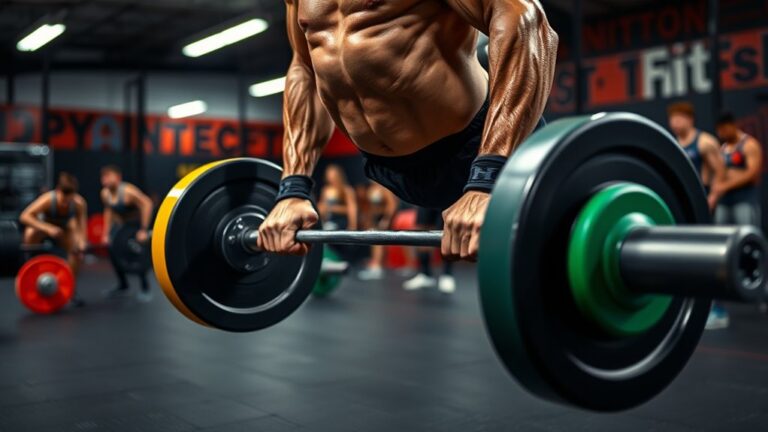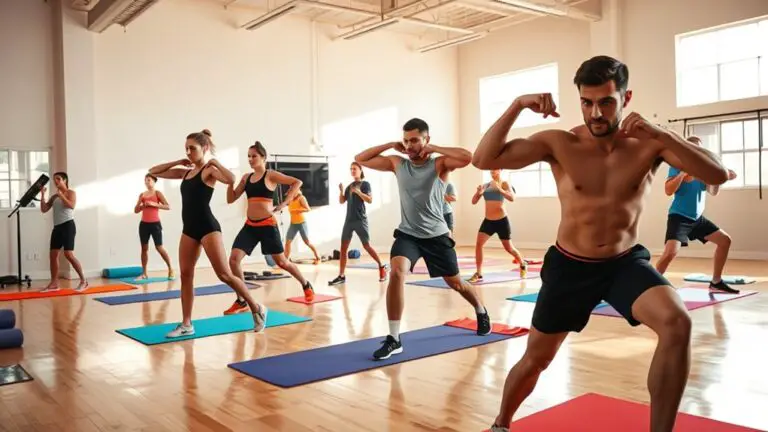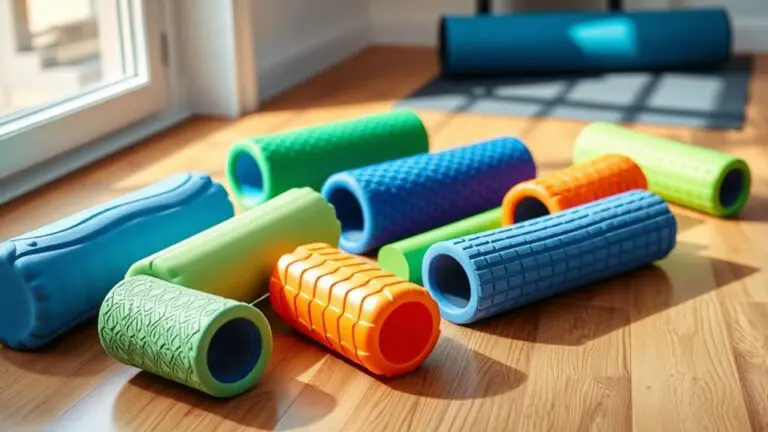The Role of Massage Therapy in Gym Recovery
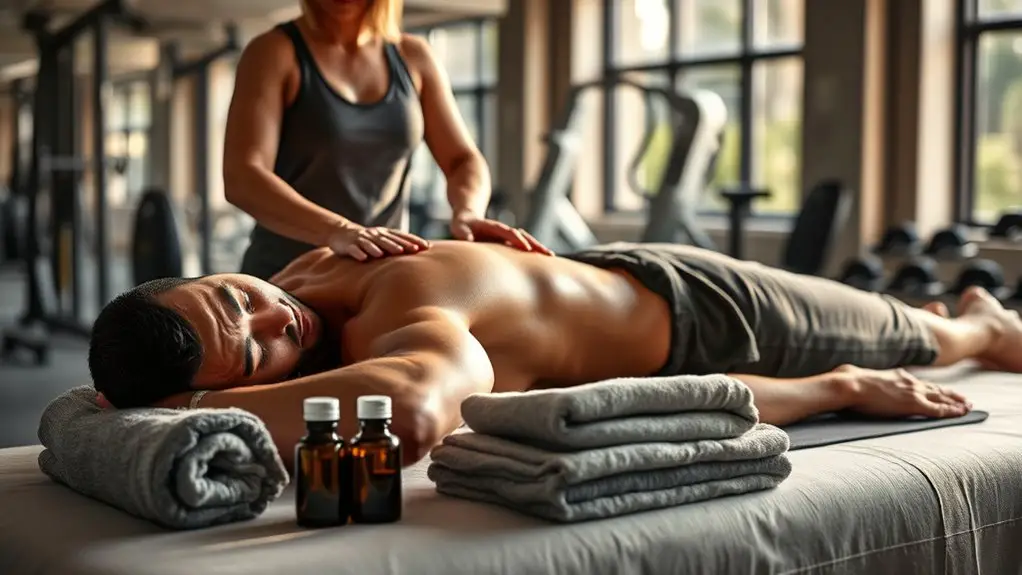
Massage therapy plays an essential role in gym recovery by targeting muscle repair, reducing soreness, and enhancing your overall performance. It improves circulation, alleviates tension, and promotes flexibility, ensuring your body heals efficiently post-workout. Additionally, the psychological benefits of massage, like reduced stress and improved mood, contribute to your overall well-being. Regular sessions can considerably enhance your recovery routine, helping you reach your fitness goals faster. There’s so much more to discover about incorporating massage into your recovery plan.
Understanding the Basics of Massage Therapy

Massage therapy is more than just a luxury; it’s an essential tool for anyone serious about gym recovery. Understanding the basics of massage can greatly enhance your overall performance and wellness. The massage benefits extend beyond mere relaxation; they include improved circulation, reduced muscle tension, and enhanced flexibility. By incorporating effective relaxation techniques, you can alleviate stress, allowing your body to recover more efficiently after intense workouts.
When you engage in massage therapy, you’re not only treating sore muscles but also promoting mental well-being. A skilled therapist can tailor each session to your specific needs, addressing areas of tension and fatigue. This personalized approach guarantees you’re getting the most from your recovery efforts. Ultimately, integrating massage therapy into your routine can be a game-changer, helping you bounce back faster and feel rejuvenated, ready to tackle your next fitness challenge with renewed energy.
The Science Behind Muscle Recovery
Effective recovery from intense workouts involves a complex interplay of biological processes that are essential for muscle repair and growth. Understanding muscle physiology is key to grasping how your body heals. After a workout, your muscles undergo micro-tears, which initiate the recovery timeline. During this phase, your body works hard to repair damaged fibers by synthesizing new proteins, enhancing muscle strength and size.
This process is influenced by factors like nutrition, hydration, and rest. The inflammatory response plays a critical role, as it helps remove damaged cells and promotes healing. Adequate recovery time allows your body to adapt, ultimately improving performance. Neglecting recovery can hinder progress and lead to injuries. By respecting your body’s signals and integrating effective recovery strategies, including massage therapy, you can optimize this biological process, ensuring your muscles are primed for your next workout.
Types of Massage Techniques for Athletes
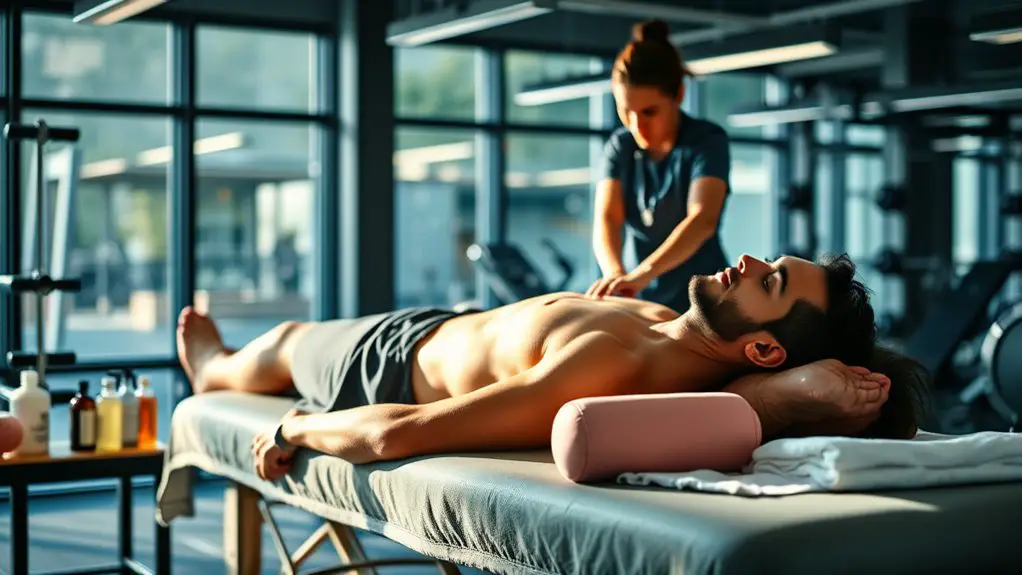
When it comes to your recovery routine, understanding different massage techniques can make a significant difference. Deep tissue massage focuses on relieving tension in those stubborn muscle layers, while sports massage techniques are specifically designed to enhance athletic performance and prevent injuries. Exploring these options can help you optimize your recovery and keep you in peak condition.
Deep Tissue Massage
While athletes often push their bodies to the limit, deep tissue massage can be an essential tool in their recovery arsenal. This form of massage uses deep tissue techniques to target muscle knots and tension, promoting effective muscle recovery. Here are four key benefits you might experience:
- Pain Relief: Reduces chronic pain by releasing tight areas.
- Improved Flexibility: Enhances range of motion, aiding performance.
- Reduced Stress: Lowers cortisol levels, contributing to mental well-being.
- Enhanced Circulation: Boosts blood flow, facilitating nutrient delivery to muscles.
Incorporating deep tissue massage into your routine can lead to faster recovery times and better overall performance, allowing you to return to training with renewed energy and less discomfort.
Sports Massage Techniques
Sports massage techniques are essential for athletes looking to optimize their recovery and performance. One effective method is trigger point therapy, which targets specific tight areas in your muscles. By applying pressure to these points, you can release tension and alleviate pain, enhancing your mobility. Another valuable technique is myofascial release, focusing on the fascia surrounding your muscles. This gentle stretching can help restore flexibility and reduce soreness, allowing you to bounce back faster from intense workouts. Both methods are tailored to your unique needs, promoting overall well-being and preventing injuries. Incorporating these techniques into your recovery routine can make a significant difference in how you feel and perform, ensuring you stay at the top of your game.
Reducing Muscle Soreness and Tension
Although intense workouts can leave you feeling accomplished, they often come with the unwelcome baggage of muscle soreness and tension. To aid in your post workout recovery, massage therapy can be a powerful tool. Here are some ways it can help reduce muscle tension:
- Increased Blood Flow: Massage enhances circulation, delivering oxygen and nutrients to sore muscles.
- Reduced Inflammation: It helps decrease inflammation, which can contribute to pain and discomfort.
- Release of Endorphins: The pressure from massage triggers the release of endorphins, your body’s natural pain relievers.
- Relaxation of Tight Muscles: Targeted techniques can alleviate knots and tightness, promoting overall relaxation.
Enhancing Flexibility and Range of Motion
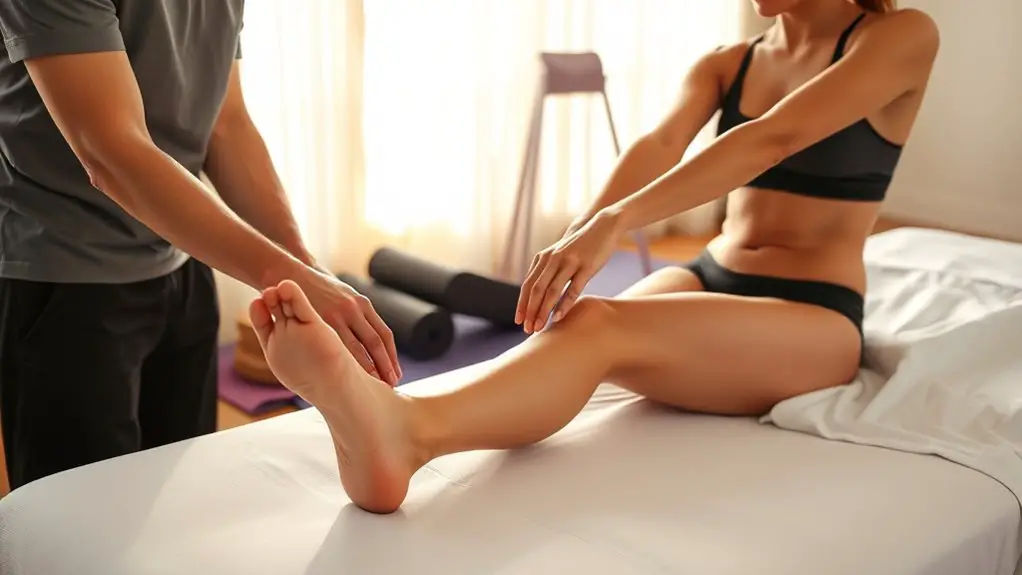
When you incorporate massage therapy into your recovery routine, you can greatly enhance your flexibility and range of motion. Improved muscle elasticity and increased joint mobility not only support your overall performance but also play an essential role in injury prevention. Understanding these benefits can help you optimize your workouts and stay injury-free.
Improved Muscle Elasticity
Massage therapy plays an important role in improving muscle elasticity, which is essential for enhancing flexibility and range of motion. By increasing muscle pliability and promoting healthy connective tissue, massage can help you achieve better performance in your workouts. Here are some key benefits:
- Increased Blood Flow: Enhances nutrient delivery to muscles, aiding recovery.
- Reduced Muscle Tension: Alleviates tightness, allowing for smoother movement.
- Improved Joint Mobility: Helps maintain the integrity of the connective tissues around joints.
- Enhanced Recovery: Speeds up healing by reducing soreness and stiffness.
Incorporating regular massage therapy into your routine can greatly support your fitness goals, making it an invaluable tool for gym recovery.
Injury Prevention Strategies
To prevent injuries effectively, it is important to enhance flexibility and range of motion in your body. Incorporating targeted stretching and mobility exercises into your routine can greatly contribute to injury prevention. By focusing on these aspects, you allow your muscles and joints to move freely, reducing the risk of strains and sprains.
Massage therapy plays an essential role in this proactive recovery approach. It helps release muscle tension, improving blood flow and promoting better tissue elasticity. Regular sessions can aid in maintaining a favorable range of motion, which is critical for performance and overall well-being.
Ultimately, prioritizing flexibility not only safeguards you against injuries but also enhances your athletic capabilities, helping you achieve your fitness goals more efficiently.
Increased Joint Mobility
Achieving increased joint mobility is essential for anyone looking to enhance their overall performance and prevent injuries. When you engage in regular massage therapy, you can improve joint alignment and flexibility, which contributes to better movement patterns. Here are some key benefits of increased joint mobility:
- Enhanced Flexibility: Improved range of motion allows for more effective workouts.
- Reduced Risk of Injury: Proper mobility can help prevent strains and sprains.
- Better Recovery: Massage aids in the elimination of muscle tightness, facilitating quicker recovery.
- Improved Performance: Greater mobility supports more efficient movement, enhancing your workout results.
Incorporating mobility exercises alongside massage can further elevate your joint health, ensuring you stay active and injury-free.
Improving Circulation and Blood Flow

When you engage in intense workouts, your muscles often endure stress and micro-tears, which can hinder your recovery process. One of the key ways massage therapy aids recovery is by improving circulation and blood flow. As the therapist manipulates your muscles, they stimulate the blood vessels, allowing oxygen-rich blood to reach the damaged tissues more efficiently. This enhanced blood flow accelerates the delivery of nutrients essential for healing and helps remove metabolic waste products that can lead to soreness.
The circulation benefits of massage therapy extend beyond immediate recovery. Regular sessions can help maintain ideal blood flow, improving overall muscle function and reducing the risk of injury. By incorporating massage into your post-workout routine, you’re not only facilitating quicker recovery but also setting the stage for improved performance in your future workouts. Embracing this holistic approach can greatly enhance your gym experience and long-term fitness goals.
Psychological Benefits of Massage Therapy
Beyond the physical benefits, massage therapy also offers significant psychological advantages that can enhance your overall gym recovery experience. By incorporating massage into your routine, you may find improvements in various aspects of your mental well-being:
- Stress Reduction: Regular massage can lower cortisol levels, helping you manage stress more effectively.
- Mental Clarity: The relaxation achieved during a massage can lead to improved focus and clarity, allowing you to better tackle your training goals.
- Emotional Balance: Massage can stimulate the release of endorphins, which helps elevate your mood and promotes emotional well-being.
- Enhanced Sleep Quality: Receiving regular massages can improve your sleep patterns, leading to better recovery and mental sharpness.
Integrating Massage Into Your Recovery Routine
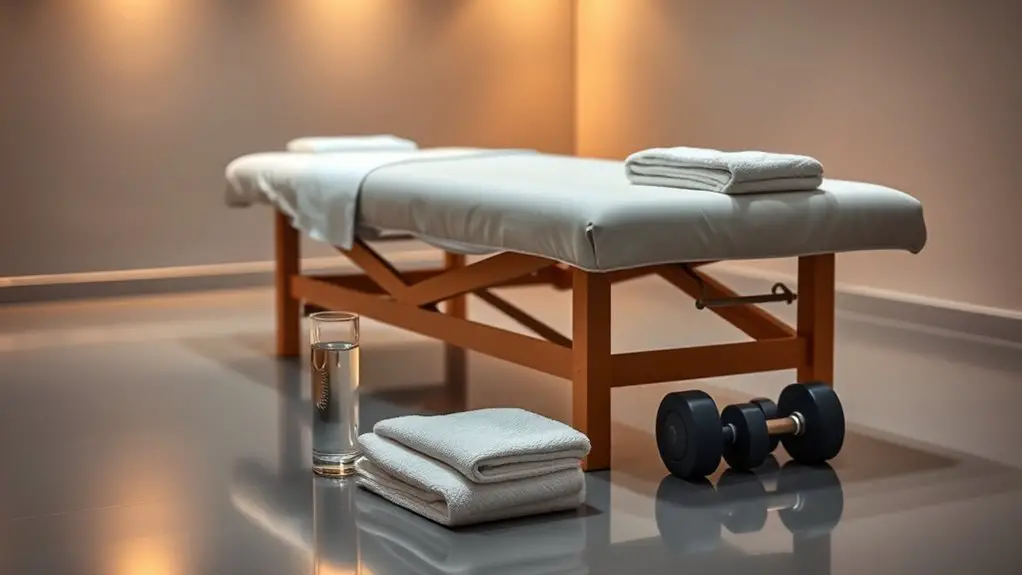
Integrating massage into your recovery routine can greatly enhance your overall performance and well-being. It’s not just about relaxing; it’s a crucial component of self-care practices that can help speed up your recovery. By scheduling regular massage sessions, you’re committing to a holistic approach to fitness.
Here’s a simple way to visualize how to incorporate massage into your recovery rituals:
| Frequency of Massage | Benefits |
|---|---|
| Weekly | Reduces muscle soreness |
| Bi-weekly | Enhances flexibility |
| Monthly | Improves circulation |
| Post-competition | Accelerates recovery process |
Each of these options can fit into your lifestyle, making it easier to prioritize your recovery. Remember, investing time in massage therapy not only supports your physical health but also nurtures your mental well-being. Make it a regular part of your routine for the best results.
Choosing the Right Massage Therapist for Your Needs
Finding the right massage therapist is key to maximizing the benefits of your recovery routine. To guarantee you make an informed choice, consider the following qualifications checklist:
- Credentials: Verify their certifications and licenses. A qualified therapist should have a solid educational background and proper training in massage techniques.
- Experience: Look for someone with experience in treating athletes or specific injuries. Their familiarity with your needs can greatly enhance your recovery.
- Therapist Specialties: Understand their specialties—whether it’s sports massage, deep tissue, or myofascial release. Choose a therapist whose expertise aligns with your recovery goals.
- Communication Skills: Ensure they listen to your concerns and tailor the session to your needs. A good therapist should make you feel comfortable discussing your body and recovery process.
Frequently Asked Questions
How Often Should I Get a Massage for Optimal Recovery?
Have you ever wondered how a little pampering could transform your recovery routine? For ideal recovery, frequency recommendations suggest getting a massage once every two weeks. This allows your muscles to heal while reaping the recovery benefits, such as reduced soreness and improved flexibility. However, listen to your body; if you’re feeling particularly tense or sore, increasing your sessions to weekly might be beneficial. Prioritizing recovery can make all the difference in your performance.
Can Massage Therapy Prevent Injuries During Training?
Massage therapy can play a significant role in injury prevention during your training. By enhancing blood flow and promoting muscle relaxation, it helps reduce tension that can lead to injuries. Regular sessions can also improve your training effectiveness, allowing you to perform at your best while minimizing the risk of overuse injuries. Incorporating massage into your routine not only supports recovery but also keeps your body in prime condition for peak performance.
Is Massage Therapy Safe for Everyone, Including Beginners?
Yes, massage therapy is generally safe for everyone, including beginners. It’s important, however, to communicate your experience level and any concerns with your therapist. They can tailor massage techniques to suit your needs, ensuring a comfortable experience. Beginners may benefit from gentle techniques that promote relaxation and circulation, helping to ease any tension without overwhelming the body. Always listen to your body and don’t hesitate to ask questions during your session.
What Should I Communicate to My Massage Therapist?
When you’re communicating with your massage therapist, it’s essential to share your massage preferences and any injury history. Let them know what pressure you prefer and any areas of tension or discomfort. Being open about past injuries can help them tailor the session to your needs. This transparency fosters a safer and more effective experience, ensuring you receive the best possible care during your massage therapy sessions.
How Does Massage Therapy Differ From Physical Therapy?
Think of massage therapy like a warm hug for your muscles, while physical therapy’s more like a structured workout plan. Massage therapy focuses on manual therapy techniques to relieve tension and improve circulation, whereas physical therapy employs rehabilitation techniques to restore function and mobility after injury. Both play essential roles in recovery, but their approaches differ—one soothes and relaxes, while the other strengthens and rehabilitates for long-term health.



